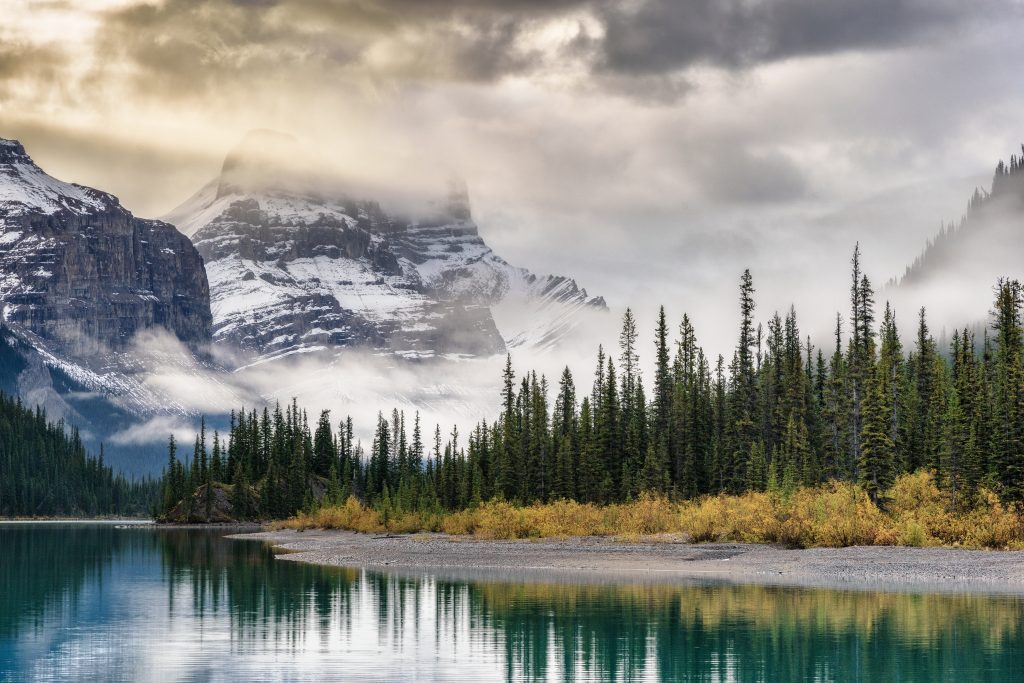The first love of a photographer should be the subject matter. Then, you can focus on getting the gear that will help you take amazing photos of your chosen subject matter. Please don’t do the other way around because each photography genre has its particularities and works better with specific lenses and gear. Landscape photography is among the most permissive genres in terms of gear. However, choosing lenses with the best focal length is key in delivering outstanding landscape photos. Learn how each focal length range influences your compositions and make an informed decision when buying lenses for landscape photography. Keep in mind that the smaller the focal length is, the wider field of view you’ll have.
Normal lenses, focal lengths: 35 – 70 mm
The human eye’s field of view corresponds to a 50 mm lens, meaning that with a 50 mm lens, you’ll frame exactly what your eyes see. With a lens in the range of 35 – 70 mm, you can quickly capture your surroundings. Some photographers call these lenses walk-around lenses because they show the world as it is. You can use them to photograph faraway landscapes or highlight details. If you use a large aperture (small f-number), you’ll be able to achieve a shallow depth of field and make your subject stand out.
Focal lengths in the 35 – 70 mm range work very well on different types of subjects and compositions. They’re versatile and easy to use, therefore great tools when you’re hiking.
Focal length 35 mm
Wide-angle lenses, focal lengths: 18 – 35 mm
When you photograph landscapes, you usually want to frame as much as possible from what you see. Because you’re far away from your subject, you need wide lenses to allow you to create interesting compositions, add depth, and reveal the beauty of nature. Small focal lengths provide wider angles than the human eye can see, which means you can create panoramic looks. Also, they give you wide depths of field and keep everything in focus.
Focal length 18 mm
You can use fisheye lenses for artistic purposes, which have a focal length between 8 – 10 mm. An ultra-wide lens may introduce distortions and produce a more artificial result. Yet when you photograph the Alps mountain ridge, you don’t want to miss a thing.
Telephoto lenses, focal lengths: 70+ mm
Focal lengths over 70 mm provide a narrower field of view and help you focus on details. Faraway hills and mountains may host interesting autumn foliage, rocks, or snow, elements that will look great in your photos. Also, telephoto lenses provide a narrower depth of field and allow you to add depth and create more exciting compositions. Use them to capture clouds, sunsets, colors, and geometric shapes that add value to your visual story.
Sometimes when you photograph faraway subjects using telephoto lenses, you may notice haze in your photos. That’s because the lens captures the particles in the air too. Use a polarizer filter or remember to remove haze in post-processing. Removing haze enhances colors and contrast.
Focal length 85 mm
As you see, there isn’t one focal length that solves all your landscape photos. It depends on your subject matter, camera-subject distance, and, most of all, your purpose. If you want to have multiple possibilities without carrying heavy gear, get a zoom lens that covers a wide range of focal lengths (e.g., usually the kit lens is 18 – 55 mm). Otherwise, observe your photographic workflow and learn to get around with a fixed focal length lens. Cover photo by Sergey Pesterev on Unsplash

